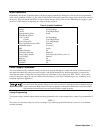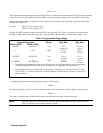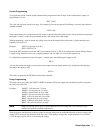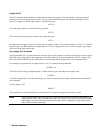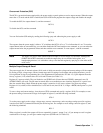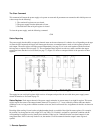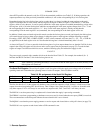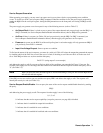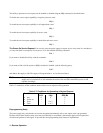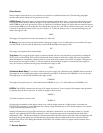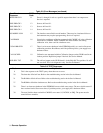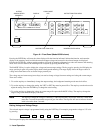
Remote Operation
79
Service Request Generation
When operating your supply, you may want it to request service every time a fault or a programming error condition
occurs. To do this you send a service request (SRQ) command. When the condition is true, the power supply responds by
setting the RQS bit in the serial poll register, setting the SRQ annunciator on the front panel, and issuing an SRQ over the
GP-IB.
The power supply can generate a service request for any of the following reasons: (refer to Table 5-7)
•
An Output Fault. If there is a fault on one or more of the output channels and you previously sent the SRQ 1 or
SRQ 3 command (see Service Request Enable/Disable information below), then an SRQ will be generated.
•
An Error. If there is an error (see Tables 5-8) and you previously sent the SRQ 2 or SRQ 3 command, (see
Service Request Enable/Disable information below), then the supply will generate a service request.
•
Power-on. At power-on, the PON bit of the serial poll register is set but the supply will only generate an SRQ if
you previously sent a PON 1 command.
•
Input Line Voltage Dropout. Same as power-on condition.
To find out the nature of the service request, you must do a serial poll. This will isolate the output that generated the request
by checking which of the FAU bits are set in the case of a fault, or checking to see if the error bit is set in the case of an
error. If the SRQ on faults was set, then send the fault query.
FAULT? 2 (using output 2 as an example)
and address the supply to talk if you want to find out which of the conditions you unmasked in Figure 5-3 are true. For
example if the supply was in overvoltage and that condition was unmasked then the response from the fault query will be
"8’’ (see Table 5-5).
Note When you query the fault, the fault register is cleared. Performing a serial poll will reset the RQS bit but
will not clear the fault register.
If the SRQ on error was set then you can send the error query ERR? and address the supply to talk. The response will
identify the error by its code (see Table 5-8).
Service Request Enable/Disable. You can query the status of the service request enable/disable function by sending
the query:
SRQ?
and addressing the power supply to talk. The response from the supply is one of the following:
0, 1, 2, or 3
0--indicates that the service request capability (except for power-on; see page 80) is disabled.
1--indicates that it is enabled for output fault conditions.
2--indicates that it is enabled for error conditions.
3--indicates that it is enabled for both fault and error conditions.



